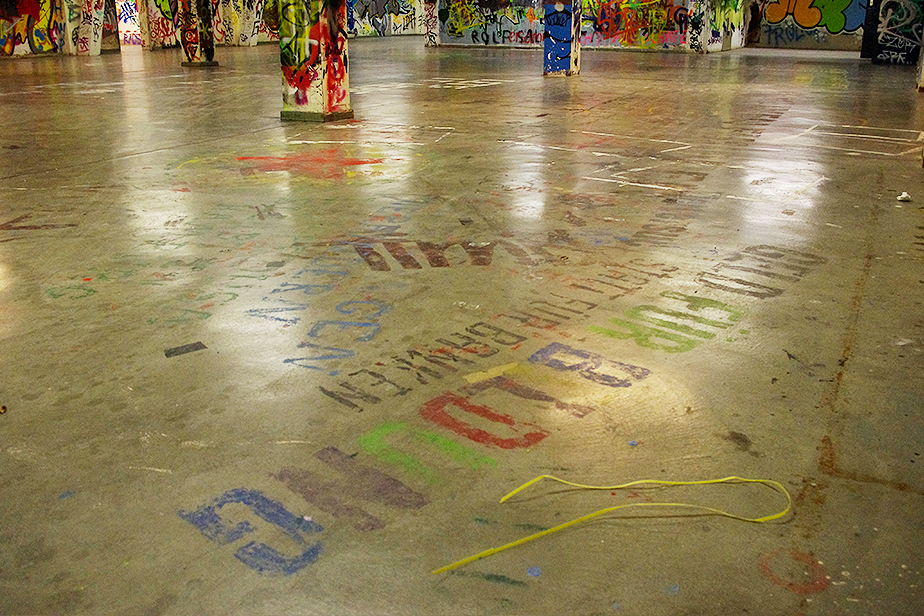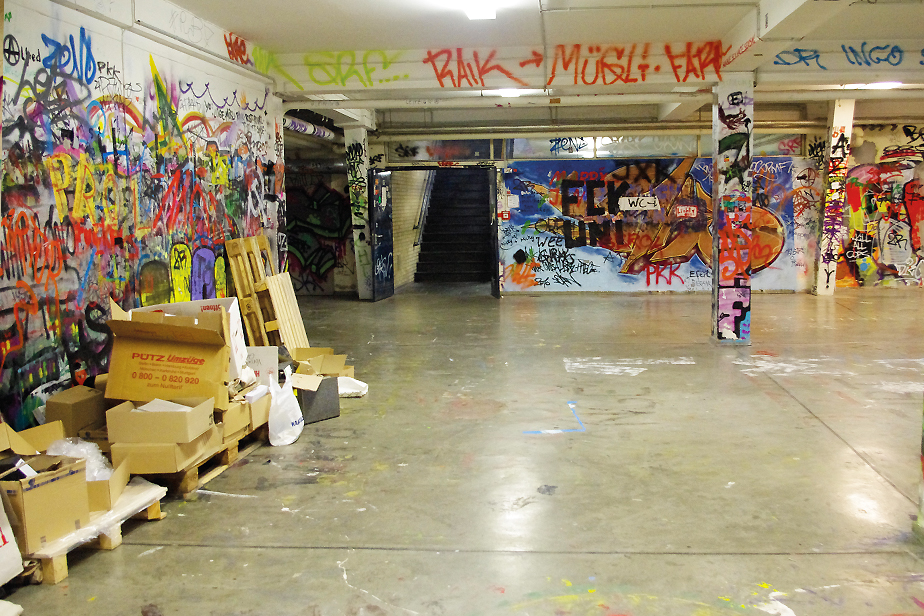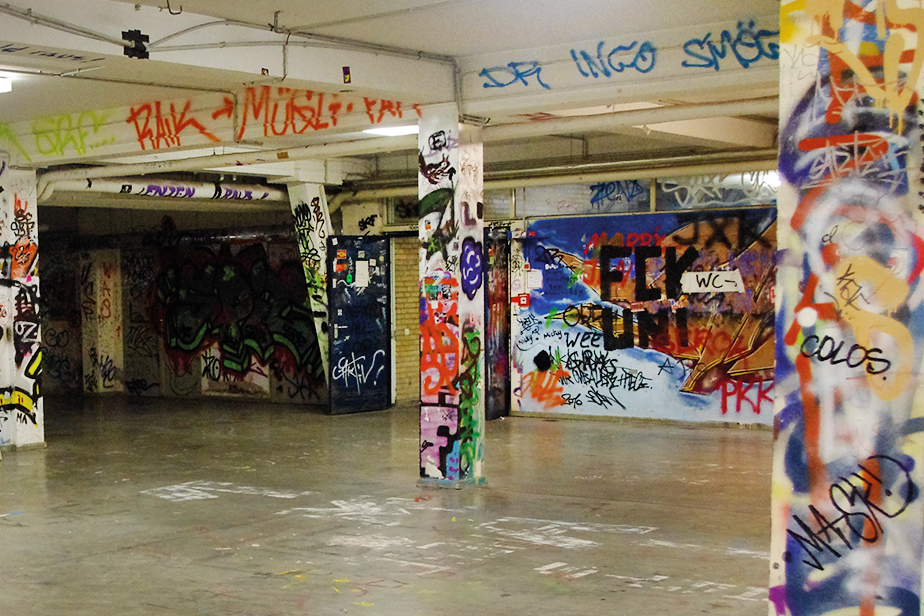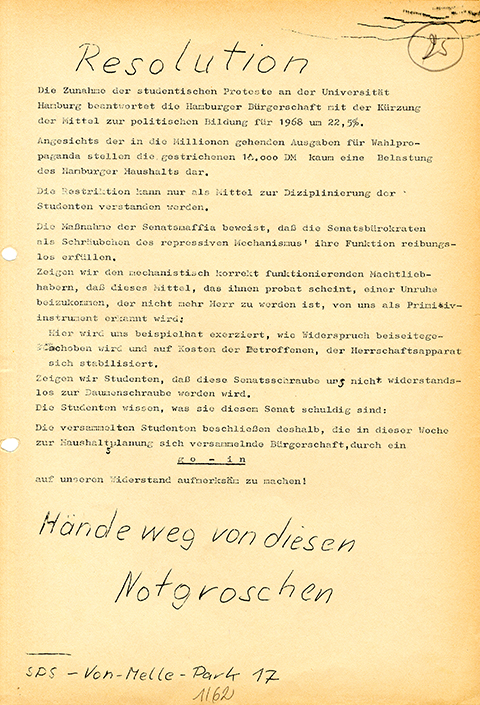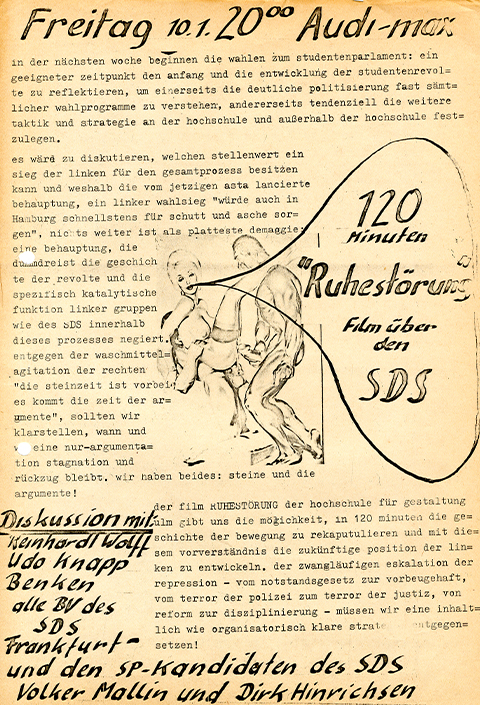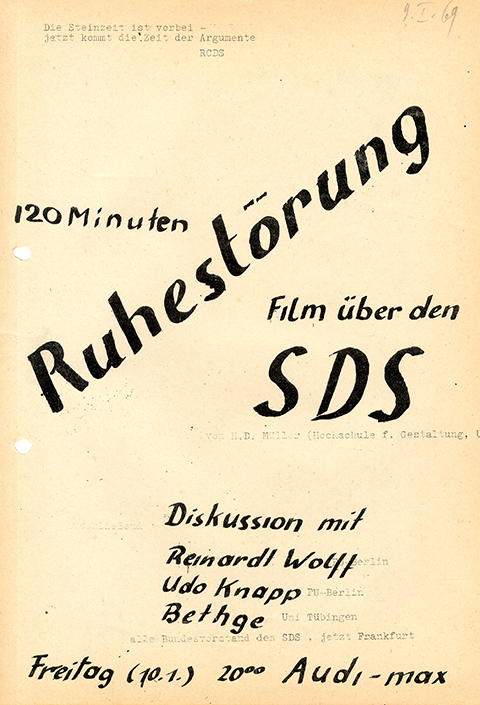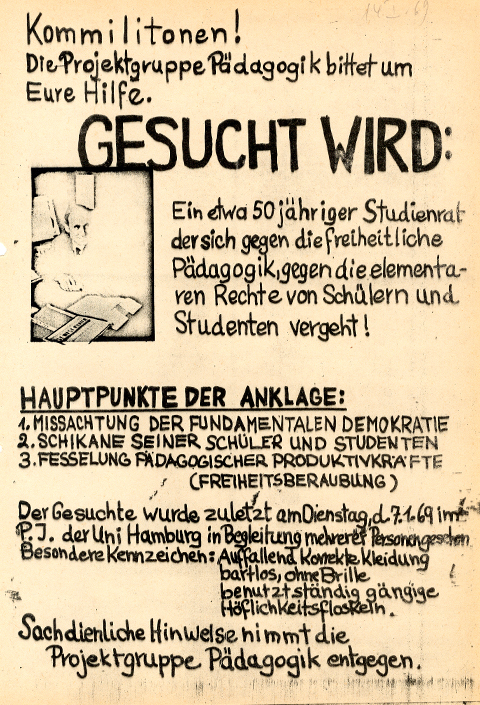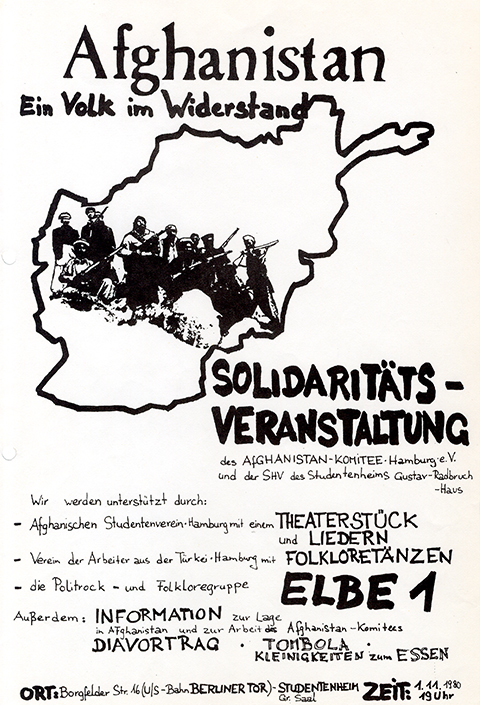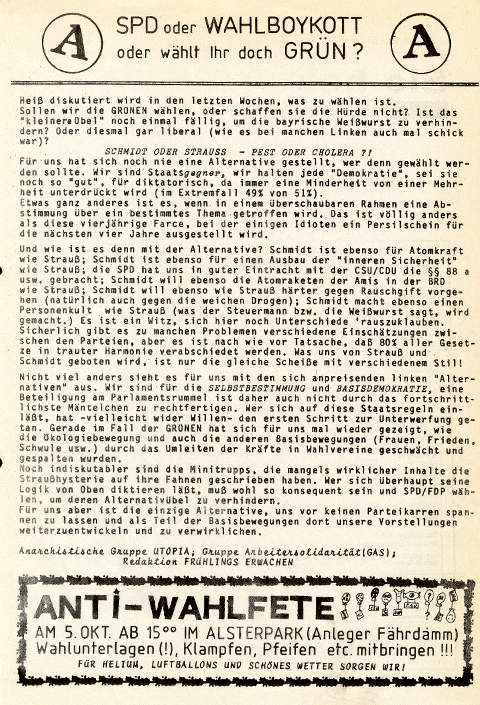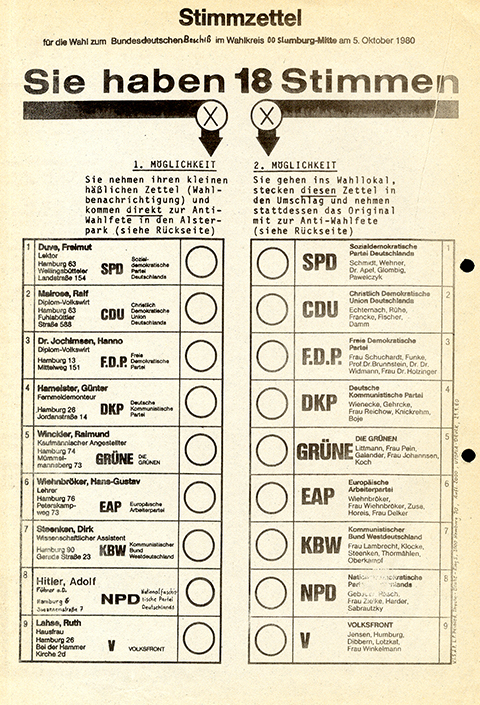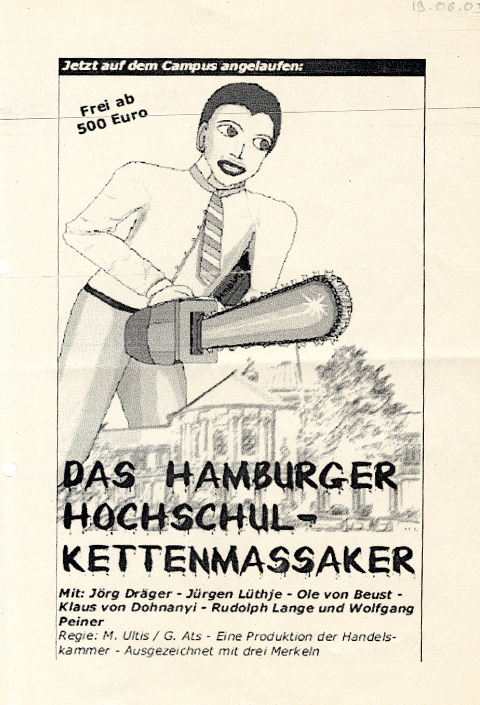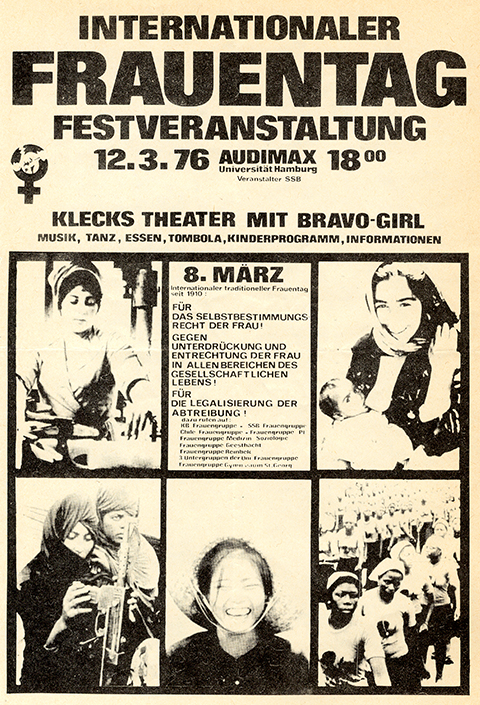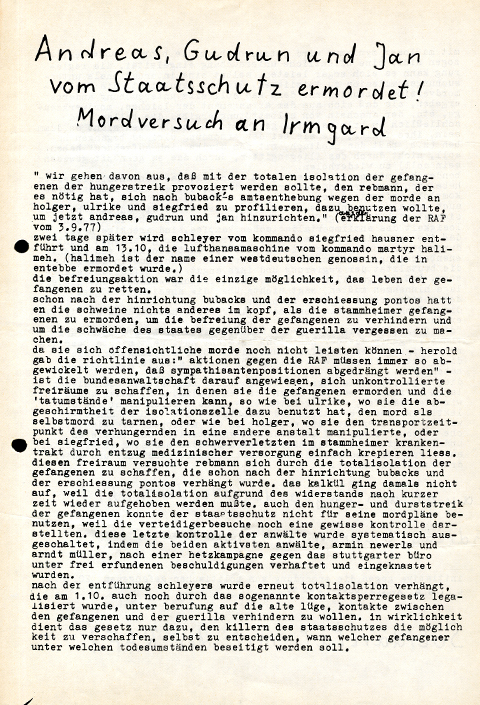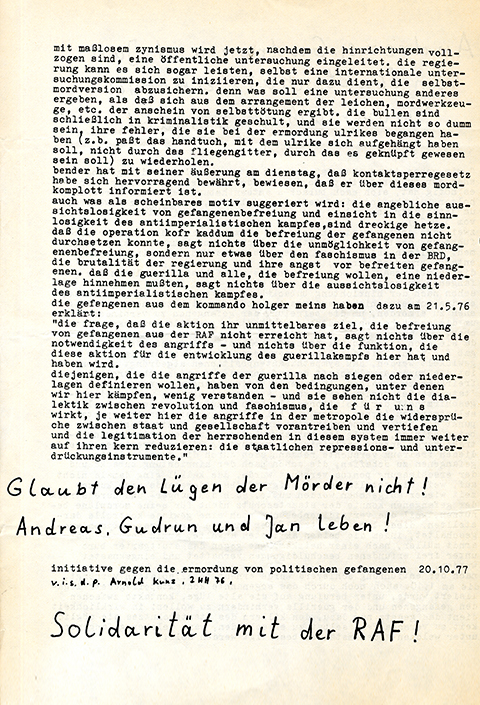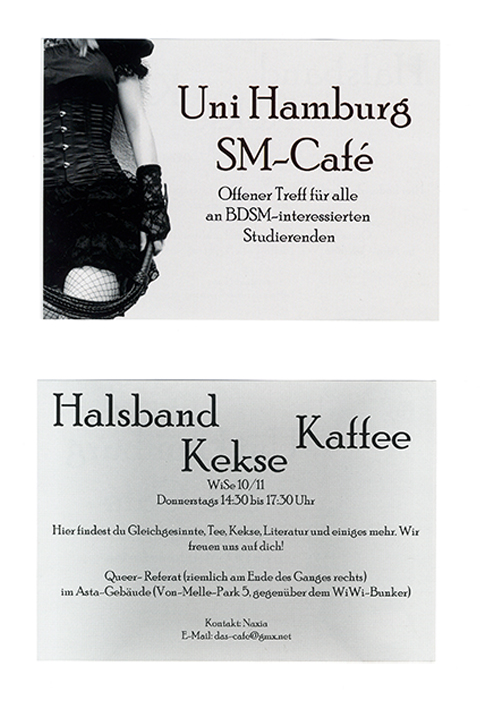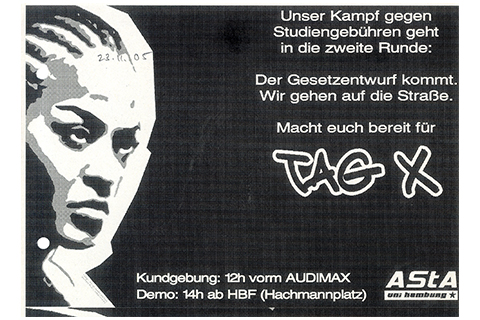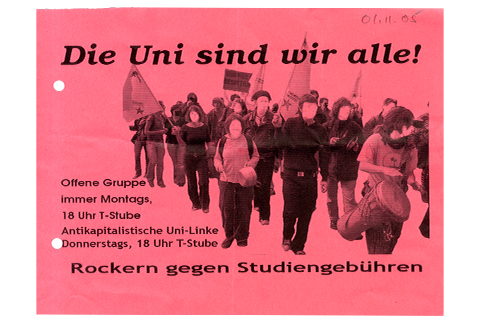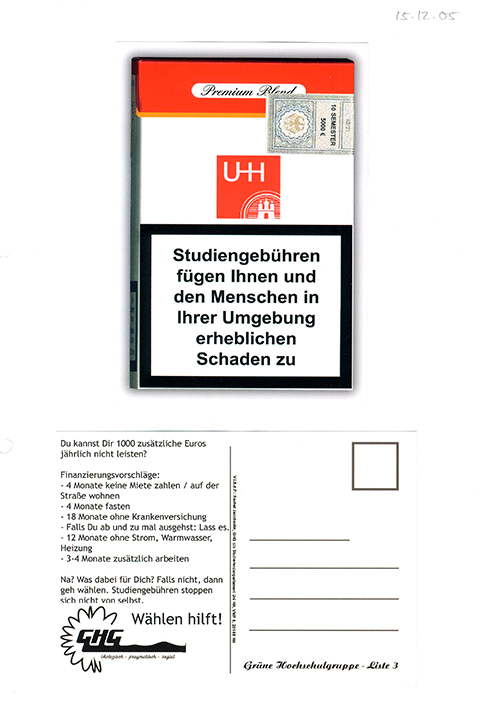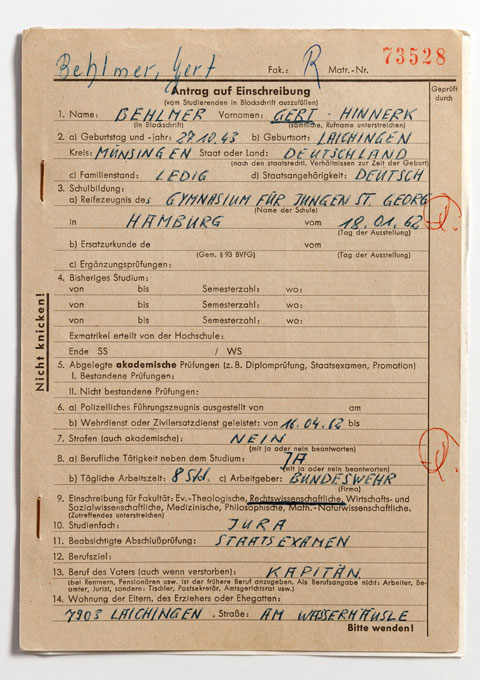Protest
Sit-ins and “go-ins”—in which lectures were virtually hijacked and turned into political discussions—as well as demonstrations, strikes, and occupied rooms and public spaces: student protests only became popular in the wake of the 1968 student movement and were seen as especially provocative. Hamburg was not a hot-bed of revolutionary activity, but the University became a symbol of the student movement when two students unfurled a banner proclaiming: “Under these robes—1,000 years of rot!”
In addition to the radical democratization of the University, the student movement called for a democratic society. It also agitated against suspensions of normal constitutional procedure, the Shah’s visit, and the Vietnam war. The movement also became a touchstone for later generations of students in Hamburg as they dealt with university and general political issues as well as their own universities’ National Socialist and colonial backgrounds.
Signs of protest
Student protest has been an integral part of the University since at least the 1960s. Individual activities may be fleeting but posters, hand-outs, and even entire books continue to attest to their existence and goals. While the hand-outs collected by the Center for the History of Universität Hamburg reflect the diversity of concerns and, often, the historical backdrop, traces of paint and random words on the basement floor of the University’s Main Building are a reminder of political activism.A stirring slogan hits the mark
During the inaugural festivities for the new rector on 9 November 1967, two properly attired students unfurled a banner proclaiming: “Under these robes—1,000 years of rot!” After years of polite wrangling over student participation and improving study conditions, the bold protest was an effective shock to the system. Academic gowns were abolished, followed by the professorial autocracy they symbolized. Reforms in April 1969 turned Hamburg’s “professorial university” into Germany’s first “group university,” with participation rights for all of groups.Protests against contemporary views of a colonial past
As a port and trading city, Hamburg was the most important hub of German colonialism following Berlin. Students at the University have addressed the University’s own colonial past and the injustices associated with it since at least the 1960s. Their demands and spectacular protests have targeted, among other things, colonial memorials erected near the University as well as the University’s founder, Werner von Melle. Since 2014, a University research office has focused on the colonial period and the traces it has left in the city. This is the first project of its kind in Germany.Protest posters
Students have been making posters in the cellar of the University building Von-Melle-Park 9 for many years. Paint soaked through the material of the banners, staining the floor. Before the markings were removed during renovations, students documented these reminders of student protest culture.„Summer of Resistance”
Across Germany, students protested against student fees in the “Summer of Resistance” in 2005. Hamburg students also joined in the protests. Despite solid resistance from an overwhelming majority of students, they were unable to stop the introduction of student fees. Hamburg scrapped the fees only five years later in 2012.
Sustained protest
Students were disgusted when a Hamburg biologist used racial arguments in his textbook. A working group took up the controversial topic and critically assessed his claims. The result was this publication and a new University lecture series.Leaflet collection
The leaflet collection of the Center for the History of Universität Hamburg is constantly growing, and documents student protest over half a century. The constantly changing topics—from states of emergency, to nuclear power, to discrimination against homosexuals—reflect the broad spectrum of student protests“Under these robes—1,000 years of rot!”
The best-known slogan of the student movement referred not only to decaying customs, but also to the Nazi past of some professors. Two members of the Hamburg AStA (student council) came up with the slogan. Their banner was made out of a piece of black crape, in mourning for Berlin student Benno Ohnesorg, who had been shot.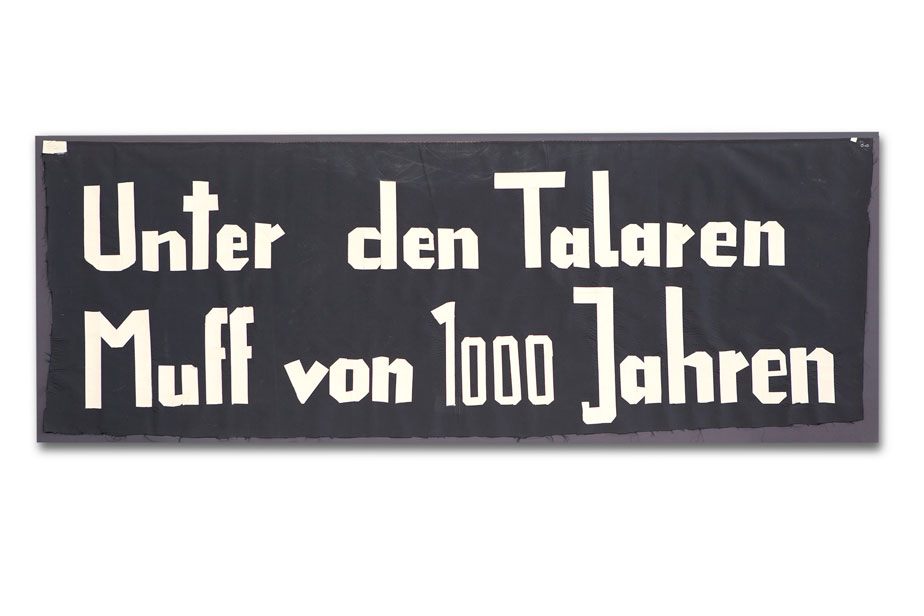
Student demands
Overflowing lecture halls, out-of-date libraries, and excessive failure rates in exams were only some of the issues criticized by AStA. It also demanded greater say for students in the committees. The newspapers reported the student complaints made at the rector’s ceremony in 1967.A university transformed
After persistent student protests, the University undertook reforms in 1969. Where once only for professors, now all groups from across the University—professors, researchers, students, and technical and administrative staff—are represented in autonomous bodies to determine the path the University will take.Set aside
The “rot” banner and the ceremony it interrupted marked the end of the era of academic robes in Hamburg. That day, 9 November 1967, was the last time they were worn officially. The official professorial vestments, the traditional symbol of academic honor, were now seen as antiquated.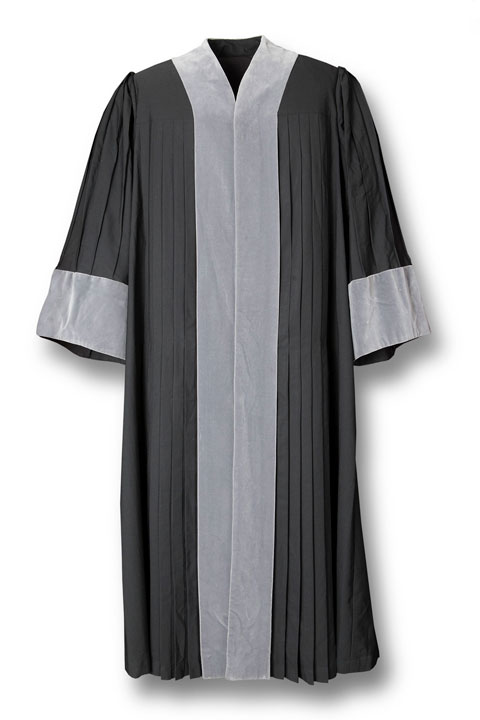
Legendary photograph
As the professors filed into the Audimax, two dapper students stepped in front of the procession. The protest had been meticulously planned and they unfurled their banner unimpeded and led the unsuspecting dignitaries into the hall. The photo, as well as their slogan, came to symbolize the student movement of 1968.The banner bearers
Detlef Albers and Gert Hinnerk Behlmer, the creators of the “rot” banner, were both studying law. They were not subject to any disciplinary action that could have ended their academic careers in 1967. Thirty years later, in the place where they first unfurled their legendary banner, they used it again to help raise funds for new seating in the Audimax.One celebration—Two invitations
The University was not alone in sending invitations to the ceremony on 9 November 1967. While the professors wanted to hold their ceremony in the traditional form, AStA (the student council) planned a public discussion about studying conditions and university reform.University founder cut to pieces
In 1977, students stole the bust of Werner von Melle. Using the slogan “von Melle’s head for Zimbabwe,” they cut the bronze statue into small pieces with an oxyacetylene torch and saws as part of a public protest. The eye was auctioned, and the remaining pieces were sold for a “solidarity price” of five German marks.For the liberation movement in Africa
The funds raised from the sale of the bust fragments were sent to the freedom movement in Zimbabwe. The poster uses the colors and shapes of the flag of the Zimbabwe African National Union (ZANU), which was fighting against white minority rule.
Historic remnants
The bust of Werner von Melle that sits in the Main Building foyer today is a replica, made in 1979. It was financed by donations after leftist radical students destroyed the original (made in 1924) as part of an anti-colonialist protest. Two fragments were found for this exhibition.
